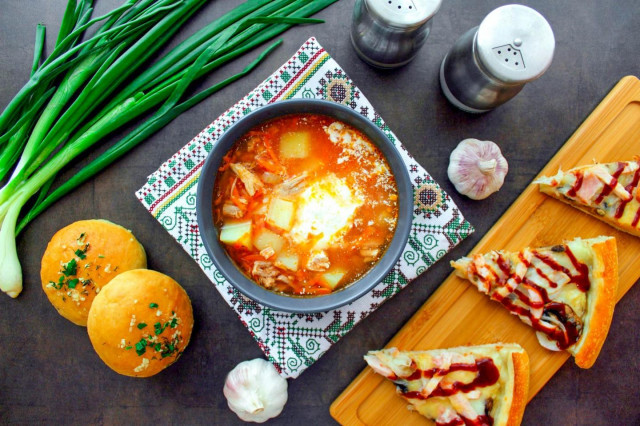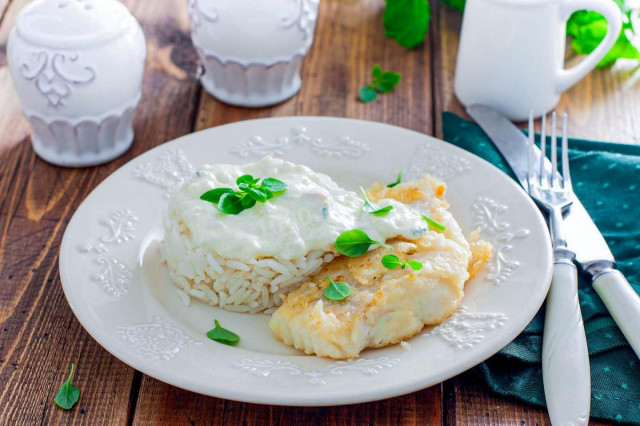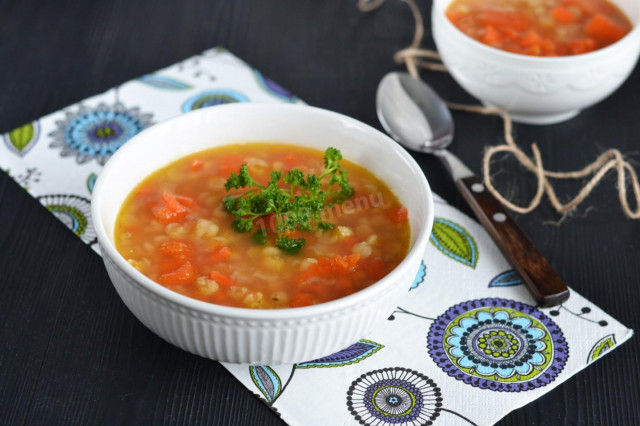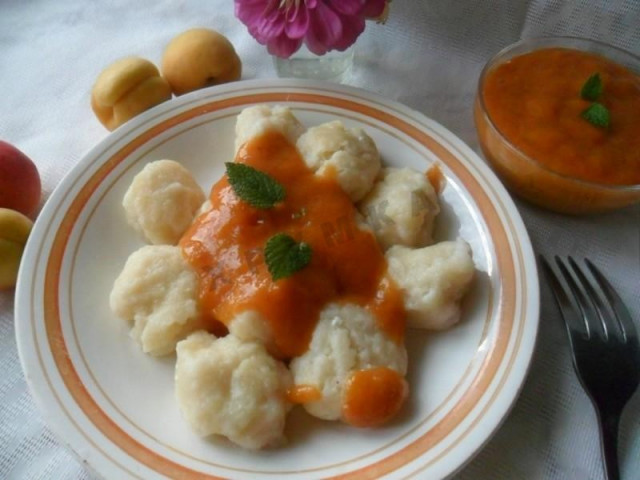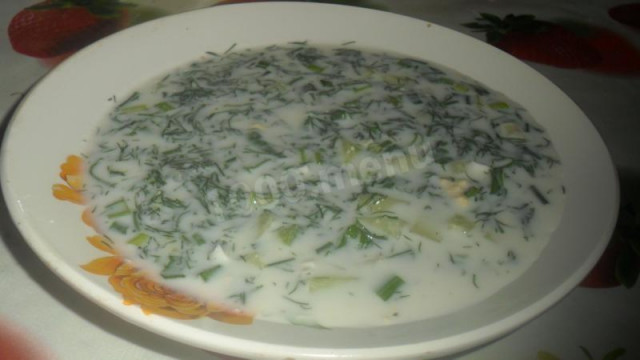Composition / ingredients
Step-by-step cooking
Step 1:
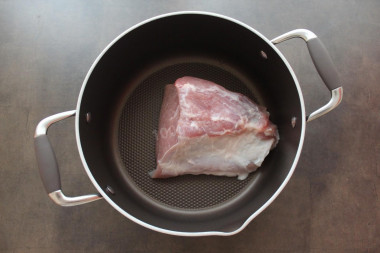
How to cook rice soup with meat and potatoes? Rinse the pork thoroughly under running water, put it in a large saucepan, pour cold water and put it on fire. Bring the water to a boil, remove the formed foam, add salt. Turn down the heat, cover the pan with a lid and cook the broth until the meat is ready, from 40 minutes to 1.5 hours, depending on the size of the piece and part of the carcass. For soup, both tenderloin and meat on the bone are suitable.
Step 2:
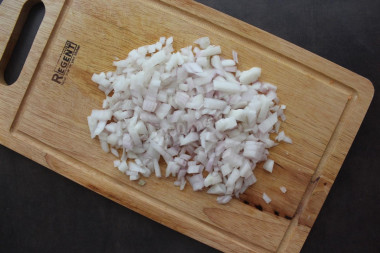
Prepare the vegetables. Peel the onion, cut into cubes and lightly fry in a frying pan in vegetable oil until transparent.
Step 3:
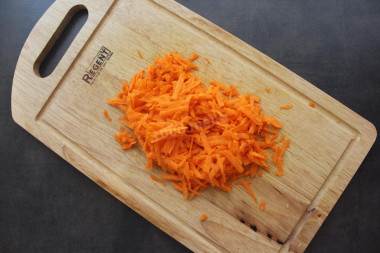
Peel the carrots, grate them on a coarse grater and add them to the onion. Fry the vegetables together for 5 minutes, stirring, over low heat.
Step 4:
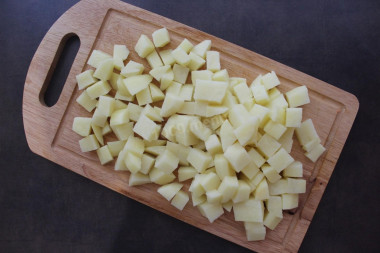
Wash the potatoes, peel and cut into medium cubes.
Step 5:
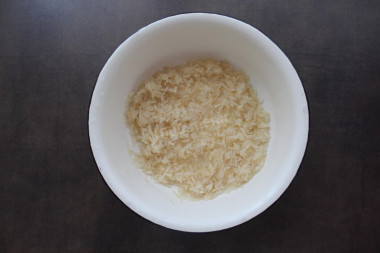
Pour the rice into a small bowl and rinse several times under running water. It is necessary to wash the rice until the water becomes almost transparent, then it will not stick together when cooking.
Step 6:
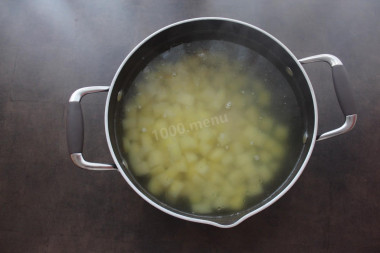
Remove the finished meat from the broth with a slotted spoon and transfer to a dish so that it cools down. Pour diced potatoes and washed rice into the meat broth. Cover the pan with a lid and cook over medium heat until the potatoes and rice are cooked, about 20 minutes.
Step 7:
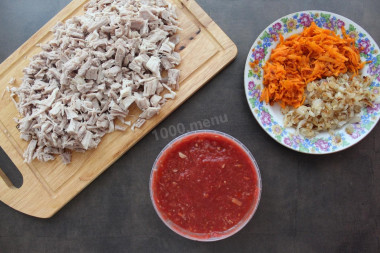
At the final stage, add fried onions and carrots, chopped meat and horseradish (tomato sauce) to the soup. If necessary, the soup can be slightly salted. Leave the pot of soup on the fire for another 2-3 minutes so that the soup boils well. When serving, season the soup with sour cream and serve it with pampushki. Enjoy your meal!
In winter, you can use purchased horseradish, but in the season of ripe and juicy tomatoes, horseradish can be cooked at home. Horseradish and garlic, which are part of this spicy seasoning, will give an unforgettable taste and aroma, and a spoonful of sour cream will give the soup a delicate shade. This soup will also be useful to eat in the autumn-winter period to maintain and strengthen the immune system, as horseradish and garlic have a warming and antiviral effect.
Important! Regardless of whether the amount of water for soup is indicated in the recipe or not, it is best to focus on your own preferences (thick or more liquid soup you like), as well as on the size of your pan and the products taken for cooking. Do not forget that the author has his own view on the amount of meat, potatoes, cereals and other ingredients in the soup, which may not coincide with yours. In practice, this means that if you are cooking for the first time, you should not cook a whole pot at once. Make a soup for tasting - for one or two people. To do this, reduce the amount of all ingredients according to the recipe to 1-2 servings, and take the amount of water from the calculation: from one cup per serving - if the soup is very thick, to 1.5-2 cups - if more liquid. Do not forget to take into account that part of the liquid will boil off during the cooking process. After tasting a small portion of soup, you can adjust both the amount of liquid and the proportions of ingredients to your taste. In the future, like most experienced housewives, you will be able to pour water for soup and lay the ingredients “by eye".
How to choose the perfect pot for soup, porridge or pickling cucumbers read the article about pots.
For cooking, it is better to use filtered or bottled water that is neutral to taste. If you use tap water, keep in mind that it can give the dish an unpleasant characteristic taste.
Calorie content of the products possible in the composition of the dish
- Onion - 41 kcal/100g
- Ripe potatoes - 80 kcal/100g
- Baked potatoes - 70 kcal/100g
- Mashed potatoes - 380 kcal/100g
- Boiled potatoes - 82 kcal/100g
- Potatoes in uniform - 74 kcal/100g
- Fried potatoes - 192 kcal/100g
- Pork fat - 333 kcal/100g
- Pork meat - 357 kcal/100g
- Pork - low-fat roast - 184 kcal/100g
- Pork chop on a bone - 537 kcal/100g
- Pork - schnitzel - 352 kcal/100g
- Pork Shoulder - 593 kcal/100g
- Boar's leg - 113 kcal/100g
- Pork - 259 kcal/100g
- Raw wild rice - 353 kcal/100g
- Brown raw rice - 360 kcal/100g
- Boiled brown rice - 119 kcal/100g
- White fortified raw rice - 363 kcal/100g
- Fortified boiled white rice - 109 kcal/100g
- White rice, steamed, with long grains raw - 369 kcal/100g
- Steamed white rice, boiled with long grains - 106 kcal/100g
- Instant dry rice - 374 kcal/100g
- Instant rice, ready to eat - 109 kcal/100g
- Fig - 344 kcal/100g
- Carrots - 33 kcal/100g
- Dried carrots - 275 kcal/100g
- Boiled carrots - 25 kcal/100g
- Salt - 0 kcal/100g
- Water - 0 kcal/100g
- Hot tomato sauce - 99 kcal/100g

